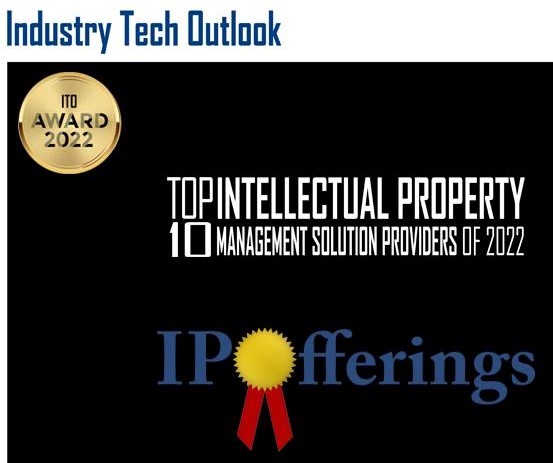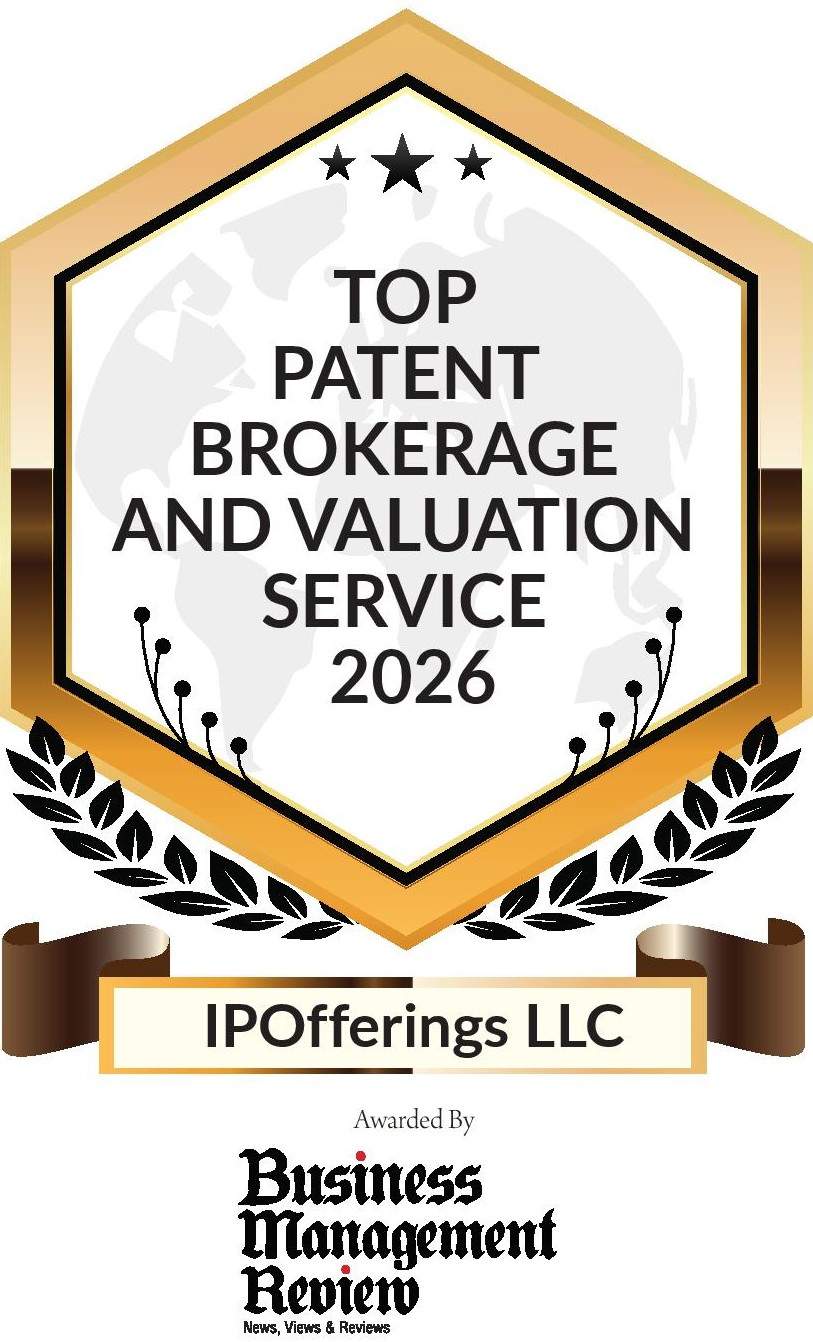Patent MarketPlace: Mobile/Wireless Patents for Sale
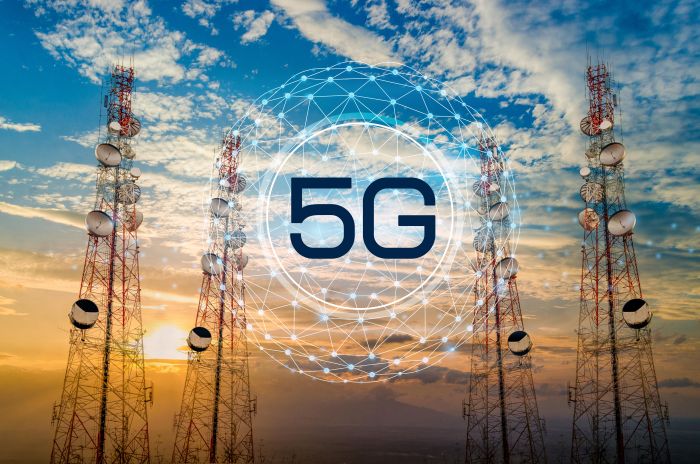 Overload Protection for 5G Wireless (Korea University): U.S. Patent No. 12,177,712
Overload Protection for 5G Wireless (Korea University): U.S. Patent No. 12,177,712
As we move from 4G Long Term Evolution (LTE) to 5G wireless technology, the need-for-speed is more critical than ever. The entire wireless infrastructure is hard pressed to push through yet more and more data. Bandwidth continues to be a hurdle as more and more users are added, and more and more data is pushed through the system.
This patent creates technology for operating the core network in a wireless communication system through the processes of determining the content to store in a terminal based on the location information of the terminal. It then transmits the content transmission command to the base station so as it can transmit the content to the terminal in response to the determination while checking whether the terminal has entered the overload cell, and forming a device-to-device communication link between the terminal and another adjacent terminal when it is identified that the terminal has entered the overload cell.
U.S. Patent No. 12,177,712 for a “Method and apparatus for content transmission using a terminal storage device in a wireless communication system” will enable any wireless services provider to push more data through the network without fear of an overload.
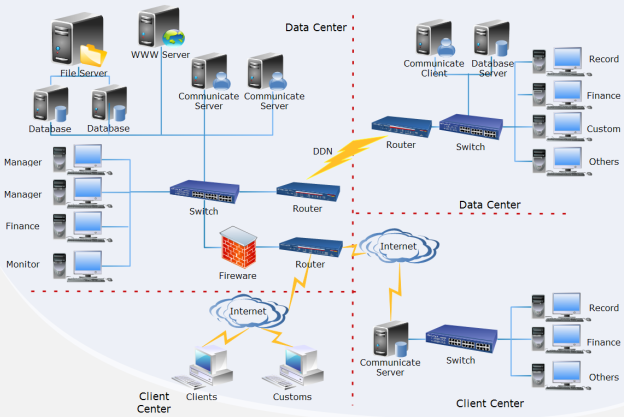 Improved Access to an IEEE 802.11 Digital Data Network (Instituto de Telecomunicacoes): U.S. Patent No. 9,717,455
Improved Access to an IEEE 802.11 Digital Data Network (Instituto de Telecomunicacoes): U.S. Patent No. 9,717,455
Every Local Mobility Anchor (LMA) needs an uplink interface to an upstream network and several Mobility Access Gateways (MAGs) – fixed access points comprising a wired interface to the LMA and one or more MAGs. And, each Mobile Network Node (MNN) that comprises a wireless interface to one or more MAGs must connect to the access point so data packets arrive at the LMA and are destined to the MNN are routed and forwarded to the MNN through the MAGs.
The architecture covered by this patent is composed of:
- An LMA which is the central node of the architecture located on a server, desktop, cloud, etc.
- A MAG which is a fixed infrastructure access point that can be replicated in Wi-Fi hotspots, road side units, etc.
- A mobile MAG which is an access point inside a vehicle that can also be replicated in the architecture in cars, trucks, boats, etc.
- A MNN which is a user device that can be also replicated in the architecture in smartphones, laptops, tablets, multimedia devices, etc.
The MAGs provide wireless networks to allow its users to connect to the backbone network. The wireless technologies available are IEEE 802.11a/b/g/n/p and 3G/LTE. The MAGs allow extension of the network by connecting to MAGs or Wi-Fi networks, providing support for multi-hop capabilities over mobile access points.
U.S. Patent No. 9,717,104 for a “Method and system for providing data access to mobile network nodes of a data network” would enable any manufacturer of smart phones or provider of smart phone services to provide superior connectivity with other devices.
 SmartPhone Movement Restriction (Combine Bridge): U.S., China, and Japan Patents
SmartPhone Movement Restriction (Combine Bridge): U.S., China, and Japan Patents
There’s an old joke about walking and chewing gum at the same time. But walking while talking or texting on a smartphone is not a joke. It can result in serious injuries – even death when a smartphone user walks into traffic. That is why it is illegal in most states to talk or text while driving. The reality is that walking while talking or texting on a smartphone can result in people not just bumping into each other, but bumping into walls, columns, trash bins, and furniture, falling down stairs and escalators, and tripping over curbs and steps.
This international patent portfolio creates a new layer of safety for smartphone users. When a person is walking or moving at a pre-determined speed, a warning signal first appears on the screen of the device. If the user continues to move, access to the smartphone – except for incoming calls – is restricted. When the user stops moving, the system displays a question on the screen of the phone. If the user answers the question correctly, the system removes the restriction, allowing full access to the smartphone. The system’s settings are programmed to the safety parameters of the smartphone owner. Employers can install restrictions on phones issued to employees, and parents can install the technology on the phones of their children or elderly parents. The technology can also be installed on wearable devices.
Patent Portfolio
- U.S. Patent Application 20230275988: Use restriction method, portable terminal, and storage medium
- China Patent 114342344: Use restriction method, portable terminal, and storage medium
- Japan Patent 6688519: Usage restriction method, mobile terminal, and program
This portfolio – or patents from the portfolio – can be used by smartphone manufacturers or cellular service providers to offer an added level of safety for their customers, as well as a new source of advertising revenue. It can also be used to create an app for smartphone owners.
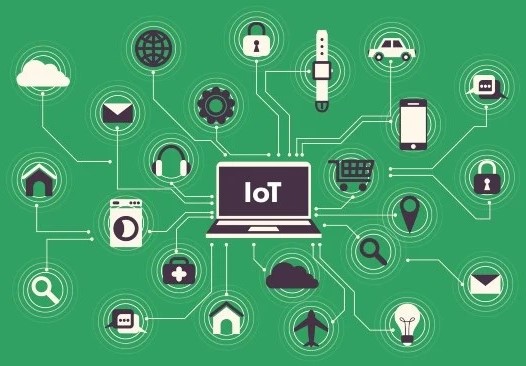 Mobile-to-Electronic Device Communication (Brain Base): U.S. Patent No. 10,560,980
Mobile-to-Electronic Device Communication (Brain Base): U.S. Patent No. 10,560,980
We like to think of ourselves as being “connected.” Our smart phone connects us to our friends by voice and text, to the Internet via WiFi, and to stores, the bank, and other places via an app. We are fully plugged in. Well, not really. Is your smartphone connected to your headphones? Does your PC connect to your Bluetooth speakers? Is your tablet able to connect to Alexa or Siri?
This patent completes the final missing link that would totally connect all of us to each other and all of our IOS® or Android™ and Windows® and Bluetooth® hardware and accessories. It enables any mobile device – smartphone, tablet, PC, laptop, personal digital assistant (PDA), or smart watch – to communicate with any electronic device – headphones, earphones, speakers, smart beacons, your car, household appliances, your smart mail box, and many gadgets and apparatus. It enables multiple connections between and among devices, it can be configured for automatic switching on and off and among devices, and it has wireless audio applications.
U.S. Patent No. 10,560,980 for a “Method for controlling wireless communication between a mobile device and an electronic device” would permit any Internet-of-Things vendor or smart phone, PC, laptop, tablet, or PDA manufacturer to have its products finally be truly “connected.”
IOS is a registered trademark of Cisco, Inc.
Android is trademark of Google LLC.
Windows is a registered trademark of Microsoft Corporation.
Bluetooth is a registered trademark of Bluetooth SIG.
 Landscape Video from Portrait Position (Siu): Two U.S. Patents and Continuation
Landscape Video from Portrait Position (Siu): Two U.S. Patents and Continuation
Video generated from smart phones has become a common fixture in today’s world – both for personal occasions and recording third-party events. But once a video is taken, it cannot be taken again, and sometimes the video would have been more demonstrative and inclusive if it had been shot in landscape instead of the default portrait mode. But once the video is taken, that is what you have.
This patent family addresses that issue by enabling the user of a smart phone or other device with video-recording capabilities to switch to landscape mode when shooting video. When a smart phone user is shooting video, and he or she realizes that a landscape view would better capture the activity that is being videoed, the user can switch to landscape with the touch of an icon. The camera will switch from its portrait image sensor to its landscape image sensor so a landscape view of the area that is being shot will be recorded.
U.S. Patent Nos. 11,297,260 and 11,689,819 for a “Techniques for capturing video in landscape mode by a handheld device” would enable any manufacturer of smart phones or other portable devices with video capabilities to offer its customers two options for shooting in landscape orientation. It would allow users to capture landscape video and photos without having to rotate the cellphone and to change the capture mode from landscape to portrait and vice versa with one touch without having to change the handheld position of the device.
 Digital Concierge (Blufield): Two U.S. Patents
Digital Concierge (Blufield): Two U.S. Patents
You are in Chicago for a conference, but you are unfamiliar with the area. How do you find a good Italian restaurant? Back home, you are not up to date on all the new spots to entertain friends from out of town. How do you find just the right place? You’re on vacation in Miami. Where can you find live music? You are attending a major citywide event, like a race or festival. There are so many events going on. How do you decide which one to hit next?
All these questions can be answered today thanks to mobile technology. But each will require more time and effort than is necessary. Wouldn’t it be better and much easier if when you are in any town or city, your smart phone simply filtered and curated a personalized listing of activities and businesses that are of interest to you? The best take-out. Information about the local farmers markets. The new museums. The local gyms. A liquor store specializing in wine selections. Where to charge your EV. Places to take the kids. A pet-friendly motel. All the things you need, and nothing you do not need!
This patent family creates a real-time, location-based marketing experience within a singular mobile application that connects with those merchants that provide the products and services of specific interest to you. And because your interests and moods change, you can select your interests based on categories, or your current mood, allowing the mobile application to provide those options to you in real-time. NO time is wasted surfing the web and filtering out all the things of NO interest to you. This patent family also serves as the foundation for a singular super app, allowing for coupon redemption, in-app rideshare ordering, and providing directions to your desired location – this patent family addresses it all. Select your interests on the app and you are good-to-go.
This patent family includes U.S. Patent Nos. 10,021,626 and 11,051,236 for an “Apparatus, devices and methods for content distribution and access via object-motion tracking using a wireless communications network” and it will enable its acquirer to further customize the patent-protected technology.
 Spectrum Shifting for Audio-Capable Devices (Sheymov): U.S. Patent No. 11,051,115
Spectrum Shifting for Audio-Capable Devices (Sheymov): U.S. Patent No. 11,051,115
As the population ages, an increasingly larger and larger number of people have problems understanding voice communications over conventional telephones, smart phones, and other audio-capable devices. The solution has been to simply turn up the volume. The problem with just increasing the volume is that the unwanted portion of the audio spectrum is also amplified, creating unwanted noise that competes with the speech portion of the audio spectrum. To truly make audio that includes speech easier to understand, just the speech portion of the audio spectrum has to be made more audible.
To address this challenge, this patent covers technology that includes frequency “spectral shifting” or “re-scaling.” This shifting is performed by moving the entire input audio signal to a different location in the audio spectrum – one that is more audible to the user. When this is done to music it is known as “pitch shifting.” There are different implementations of this technology. It can be autonomous – that it, it is built into a telephone or other audio-capable communications devices – or it can be implemented remotely.
U.S. Patent No. 11,051,115 for a “Customizable audio signal spectrum shifting system and method for telephones and other audio-capable devices” would be a critical acquisition for any manufacturer of telephones, smart phones, conference call units, or other audio-capable products.
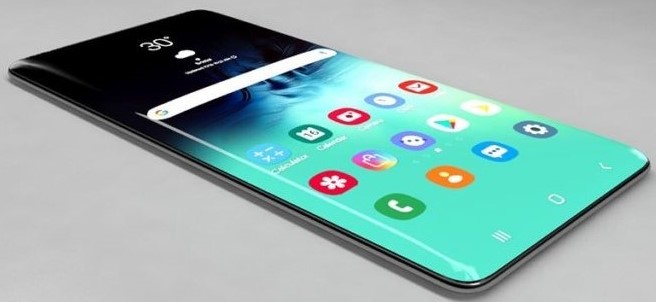 Sharper, Brighter Smart Phone Display (Zeppelin): U.S. Patent and Two Taiwan Patents
Sharper, Brighter Smart Phone Display (Zeppelin): U.S. Patent and Two Taiwan Patents
Every smart phone manufacturer strives to create a phone that is smaller and smaller, but with more and more features. Of special concern to smart phone OEMs is making the displays sharper and brighter, but to do so without increasing the size, weight, or cost of the device!
This portfolio addresses that specific need by creating a smartphone with iris detection and an advanced display that uses a thinner transparent panel on which a transparent antenna is formed to minimize the shielding effect. The display also uses a self-luminous panel - having the property of emitting light – to remove the back light module, thereby minimizing the thickness of the device. The design covered by this portfolio creates a computing device with a video display that has fluorescent substances formed between the electrodes for generating brighter and sharper color for display. The computing device also employs iris detection to perform user instructions.
This portfolio includes U.S. Patent No. 10,694,016 for a “Mobile phone with an eye illumination” as well as Taiwan Patent I443606 for a “Control system” and Taiwan Patent I442344 for a “Wireless sharing image method and the system of the same.” This portfolio would be a critical acquisition for a smart phone manufacturer looking for sharper and brighter colors for its displays. A Claim Chart is available upon request.
 Higher Resolution Images over Limited Bandwidth (Bradium Technologies): Nine U.S. Patents
Higher Resolution Images over Limited Bandwidth (Bradium Technologies): Nine U.S. Patents
When two lanes of traffic are fed into a one-lane road, the flow of traffic slows down, and drivers have to wait. When too much data is fed into too little bandwidth, the same thing happens, and users must wait while the data they seek loads. Images use significantly more data than text, so sending and receiving photos and video can slow things down.
This portfolio addresses that issue head-on. It covers a network-based image-distribution system that more efficiently selects and distributes image parcels through a narrow or limited bandwidth communications channel. From the first patent that was granted back in 2006, this portfolio has been continually updated through to the latest generation of wireless technology with the newest patent that was granted just two years ago.
Patent Portfolio
- U.S. Patent No. 7,139,794: System and methods for network image delivery with dynamic viewing frustum optimized for limited bandwidth communication channels
- U.S. Patent No. 7,644,131: Optimized image delivery over limited bandwidth communication channels
- U.S. Patent No. 7,908,343: Optimized image delivery over limited bandwidth communication channels
- U.S. Patent No. 8,924,506: Optimized image delivery over limited bandwidth communication channels
- U.S. Patent No. 9,253,239: Optimized image delivery over limited bandwidth communication channels
- U.S. Patent No. 9,635,136: Optimized image delivery over limited bandwidth communication channels
- U.S. Patent No. 10,218,814: Optimized image delivery over limited bandwidth communication channels
- U.S. Patent No. 10,356,211: Optimized image delivery over limited bandwidth communication channels
- U.S. Patent No. 10,367,915: Optimized image delivery over limited bandwidth communication channels
This portfolio would be a strategic acquisition for any Internet mapping vendor, wireless phone manufacturer, or cellular services provider. Claim Charts are available upon request.
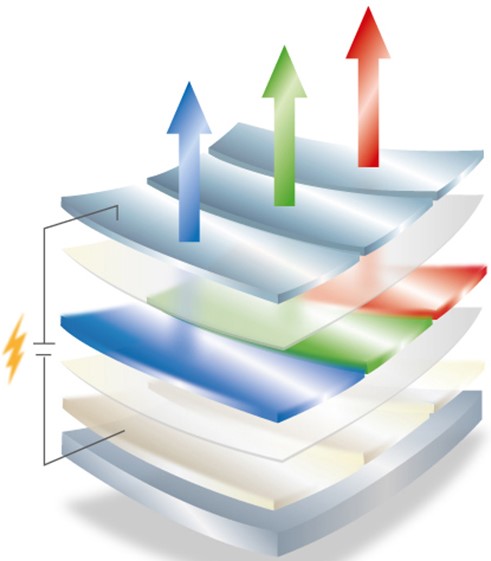 OLED Lighting for Smartphones (Zeppelin): U.S. Patent No. 10,313,630
OLED Lighting for Smartphones (Zeppelin): U.S. Patent No. 10,313,630
Smartphones are getting smarter and smarter. And smaller and lighter. This patent advances the cause by providing an Organic Light Emitting Diode (OLED) display for a smartphone, replacing the LCD back light on the previous generation of phones. OLED lighting has a front substrate that has a conductive line and a rear substrate that has a second conductive line, and fluorescent substances are formed between the front and rear substrates. This creates self-luminance, eliminating the LCD backlight module.
This patent also covers an antenna located at the side of the rear transparent substrate to improve reception and transmission.
U.S. Patent No. 10,313,630 for a “Mobile phone with fluorescent substances” is a foundational smartphone patent. It has a 2007 Priority Date and 27 Forward Citations. Since the patent was granted, most smartphone manufacturers have caught up with this patent’s technology and use OLED lighting. Evidence-of-use for this patent is available upon request.
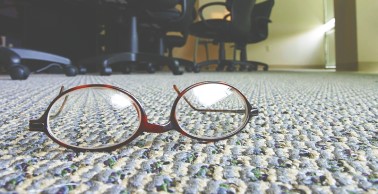 Find Your Lost Eyeglasses (Bronniman): U.S. Patent No. 10,276,028
Find Your Lost Eyeglasses (Bronniman): U.S. Patent No. 10,276,028
Over 100 million Americans wear prescription eyeglasses, and another 200 million own sunglasses. The statistic we do not know is how many thousands of hours are lost in a lifetime looking for those eyeglasses? They are so easily misplaced, and they are always in the last place you look!
This patent creates a brilliantly simple technology for finding lost eyeglasses. A microchip and battery are implanted in the eyeglasses or sunglasses frame, and that chip communicates with a smart phone or other smart device via Zigbee® or other Smart Home networks. A five-year battery powers the system for well beyond the average lifetime of a pair of glasses. When the user cannot find his or her glasses, an app on the user’s smartphone, tablet, or other device directs that person to the eyeglasses’ current location. As a preventative measure, the technology can be set to notify the eyeglasses owner when he or she is more than a defined distance from the glasses. No more leaving your glasses at a restaurant, store, or the office!
U.S. Patent No. 10,276,028 for an “Eyeglass tracking system and method” will enable an eyeglass frame manufacturer to introduce – and profit from – the first significant innovation in eyeglasses since bifocals!
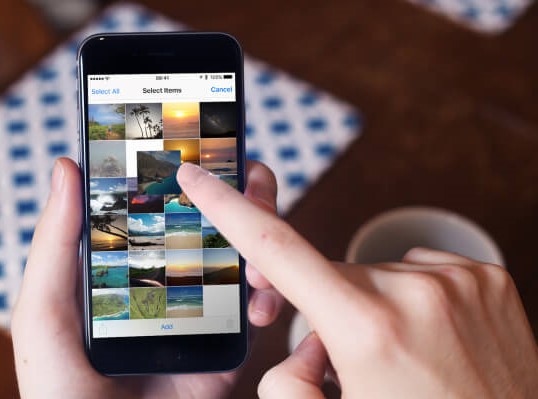 Find Photos of Your Favorite People (Zeppelin): U.S. Patent No. 9,277,086
Find Photos of Your Favorite People (Zeppelin): U.S. Patent No. 9,277,086
Most people today use their smartphones as cameras. And the photos we now keep on our phones replace the photo albums of just a few years ago. The problem for most people is that it is so easy to take a photo, and so easy to store a photo, that we quickly end up with hundreds of photos. And that makes it difficult to find a specific photo, or photos of a specific person, among hundreds of photos we have.
The technology covered by this patent enables a smartphone user to more quickly find photos of a certain person – be it your husband or wife, your boyfriend or girlfriend, your son or daughter, or anyone else. The technology scans all of your photos, and sorts them into groups of the most popular persons. Once you identify a specific person – your fiancé, for example – the technology uses facial recognition to locate all photos of your fiancé. And, every time you take a picture that includes him, it is added to the group, enabling you to now search for photos by name – rather than having to scroll through hundreds of photos – to show your friends the man of our dreams.
U.S. Patent No. 9,277,086 for a “Photograph sorting method for portable communication device” would enable any smartphone manufacturer to add yet another level of added value to its products. This patent has a Claim Chart that is available upon request.
 Secure Data Transfer via Touch Surface (Datca): U.S. and European Patent Portfolio
Secure Data Transfer via Touch Surface (Datca): U.S. and European Patent Portfolio
There is an immediate and ongoing need to quickly and securely transfer data between devices – smart phones, tablets, and styluses (or electronic pens) – as well as transferring financial data for purchases and other transactions. The current options – LAN, RF, Wi-Fi, NFC, cable, memory card, email and so on – all have their limitations and drawbacks. What has been needed for some time is a secure method for quickly and safely transferring data – a system that is affordable, easy to use, and one that a third party cannot interdict.
This Euro-American portfolio addresses exactly that need by enabling two devices to quickly and securely transfer data between them using a capacitive touch surface to transfer the data. A device is placed on a capacitive surface such as the screen of a tablet or a stylus and the two devices exchange identities via negative electronic signals. Once the identities are confirmed, and the data to be transferred is defined, the data is transferred safely and quickly, and totally secure from intrusion by any third party – unlike LAN, Wi-Fi, email or other data transfer methods that are not nearly as secure – nor as fast and easy-to-use. Financial information can be transferred for credit and debit card transactions using this technology.
Patent Portfolio
- U.S. Patent No. 9,939,886: Data communication method via touch surface
- U.S. Patent No. 10,325,571: Data communication method via touch surface
- U.S. Patent No. 10,599,876: Data communication method between a stylus and a tablet computer
- U.S. Patent Application 20200183517: Data communication method between two electronic devices by using negative electric with unipolar wave frequency
- European Patent 2715484: Data communication method via touch surface
This portfolio would be a strategic acquisition for any PC, tablet, smart phone, and/or stylus manufacturer looking to create an added-value feature for its products as well as for any supplier of Point-of-Sales equipment that is prepared to introduce a faster and more secure cell phone-to-POS payment system.
 Locating Lost Children and Adults (DBI Technologies): International Patent Portfolio
Locating Lost Children and Adults (DBI Technologies): International Patent Portfolio
There are currently more than three million individuals with autism and more than six million with Alzheimer's disease in the U.S. alone. Each year, members of each group – especially those with autism who have a tendency to wander – get lost. Finding them quickly, before any harm comes to them, is an ongoing challenge.
What is clearly needed for a family with an autistic or special needs child, or an older person with limited cognitive abilities, is a reliable, affordable, easy-to-use technology that will quickly locate a missing child or adult. In addition, it should also prevent that person from getting lost in the first place. That is exactly what this portfolio does. The child or older person wearing the patented wearable device is electronically tethered to his or her caregiver. Once a contextual distance between the two is exceeded, the caregiver is notified immediately along with the location of the person as indicated on a map on his or her smartphone. If the child or adult has wandered beyond the RF range of the guardian's smartphone, the technology uses cell phone tower triangulation along with GPS coordinates to quickly locate the missing person. The technology can also be used to track children in a theme park or other large venue, and to track pets or packages.
Patent Portfolio
- U.S. Patent No. 9,002,372: Locating system for autistic child and others
- U.S. Patent Application 10,044,847: Positional awareness and locating system for cognitively impaired individuals and their caregivers
- European Patent 3172675: Improved positional awareness and locating system for cognitively impaired individuals and their caregivers (validated in Germany, Great Britain, Italy, and Spain)
- Chinese Patent Application 106796573: For cognitive injured individual and its improved location aware and alignment system of care-giver
- Korean Patent Application 20170083965: Improved positional awareness and locating system for cognitively impaired individuals and their caregivers
This portfolio would be a strategic acquisition for any cell phone manufacturer or cellular services provider to offer its customer base as an added-value product for those customers who care for autistic, special needs, or limited-cognitive-abilities persons.
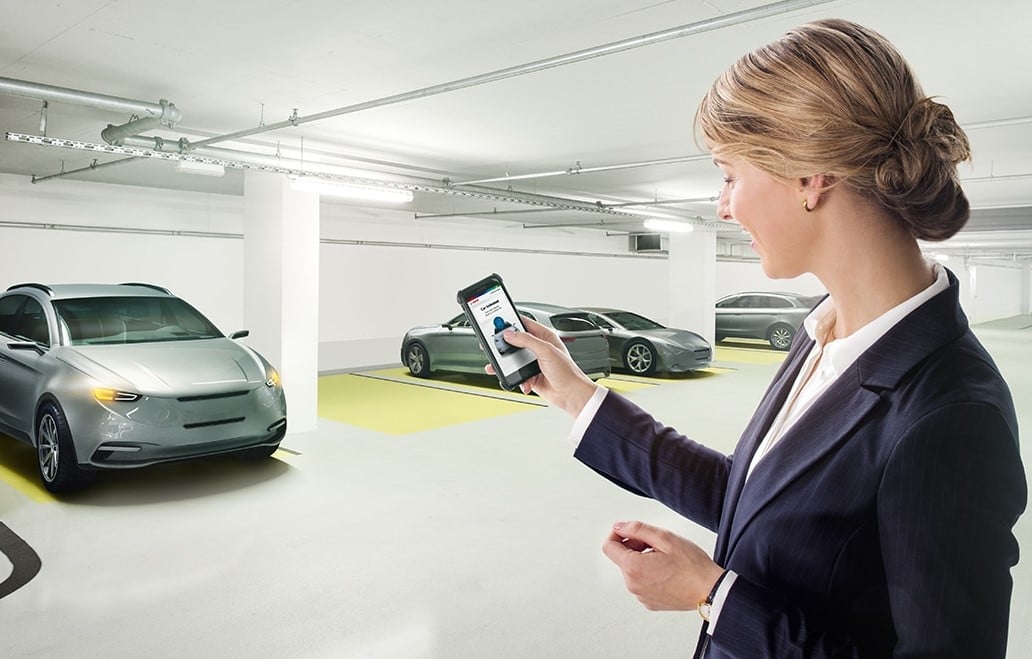 Biometric/Smartphone Vehicle Locking/Unlocking (Ahmad): Two U.S. Patents plus Continuation
Biometric/Smartphone Vehicle Locking/Unlocking (Ahmad): Two U.S. Patents plus Continuation
We’ve all locked ourselves out of our car at one time or another. Whether it is an older car with a conventional key, or a newer car that uses just a fob, we’ve all faced that stomach-churning moment when we realize we do not have the key. Or do not have it with us. Parallel to that is the reality that the smartphone we carry around with us does a lot more than just make and receive phone calls. We can use it to pay bills, facetime with grandma, and monitor the front door to our home. Why not also use our smart phone to unlock our car?
This patent addresses exactly that very logical concept. You ask your smartphone to unlock your car. It asks for biometric authorization such as a fingerprint, and it unlocks the car by communicating with a module attached to the vehicle. The invention can also be used to give access to a vehicle to a friend or co-worker, by share-riding services to confirm that a customer is really a customer, or to control access to autonomous vehicles. Biometrics is a key element because it prevents a bad guy from stealing your smartphone and then using your stolen smartphone to also steal your car! The patented invention uses NFC (near-field communications) so you just need to be near your car such as while you are walking to it in a parking lot or parking garage.
This portfolio includes U.S. Patent Nos. 10,343,650 and 10,604,115 for a “NFC system for unlocking a vehicle via smartphone biometric authentication” plus an open continuation. This property would be a valuable acquisition for a cell phone OEM or service provider, or for an automotive accessories aftermarket supplier, or for an auto company that wants to offer added security and convenience for its customers.
 Distracted Driver Prevention (Bachmann): U.S. Patent No. 10,230,834
Distracted Driver Prevention (Bachmann): U.S. Patent No. 10,230,834
The National Highway Traffic Safety Administration reports that 2,841 Americans were killed in automobile accidents in 2018 (the latest year for which we have accurate numbers) that were caused by distracted drivers. All of these deaths – many were teenage drivers and their passengers – were caused by distracted drivers who were either talking or texting on their cell phones. Auto deaths in the U.S. from distracted driving is now the second most common cause of traffic deaths after drunk driving! The sad tragedy is that all of these deaths were 100% preventable.
There has to be a solution, and it is this U.S. Patent. This patent creates an app that uses location data analysis to accurately determine who is driving a vehicle and to restrict that person from using his or her mobile device. Unlike other products on the market, it determines who the driver of the vehicle is and specifically disables only the driver’s device and does not affect any passengers in the vehicle who are free to use their mobile devices.
Additionally, if status data is NOT received from at least one of the passengers in the vehicle in a predetermined period of time after a sudden impact or event that triggers the alarm, the system notifies the authorities that the vehicle may be disabled or in an accident and sends the vehicle’s GPS coordinates.
U.S. Patent No. 10,230,834 for “Applications, methods, and systems for preventing a mobile device user from operating functions of a mobile device while operating a motor vehicle” is a patent that can literally save thousands of lives. It would be an excellent acquisition by any cell phone manufacturer that wants to add value to its products, or an auto insurance company that wants to offer its customers – especially the parents of teenage children – a life-saving product!

 Selective Call Acceptance (Cha): Five U.S. Patent Portfolio
Selective Call Acceptance (Cha): Five U.S. Patent Portfolio
Every office phone system (or PBX) enables users to block incoming calls. You are in a meeting or working on something that requires your full attention, so you can instruct the system to block all incoming calls and either send callers directly to voicemail or refer them to someone else in your organization. Gee, it’d be great if your cell phone had a “Do Not Disturb” setting.
Well, it can. This portfolio creates technology whereby a smartphone can block either all incoming calls or block selective incoming calls (based on the incoming number from the Caller ID function), and send those calls directly to voicemail without the phone ringing and disturbing the user. U.S. Patent No. 9,749,469 goes beyond cell phones and applies this technology to a call center telephone system. Also included in this portfolio is U.S. Patent No. 8,676,174 that enables a smartphone to retrieve content from a portable device via a voice command.
| Patent No. | Description |
| 8,676,174 | Easy call for content |
| 9,338,292 | Method and apparatus for selective silencing of telephone ringing |
| 9,167,088 | Method and apparatus for selective silencing of telephone ringing |
| 9,497,321 | Method and apparatus for selective silencing of telephone ringing |
| 9,749,469 | Method and apparatus for selective silencing of telephone ringing |
This portfolio would be a valuable acquisition for any smartphone manufacturer or cellular service provider that is seeking to provide value-added services for its customers. A Claim Chart covering four of the patents in the portfolio is available upon request.
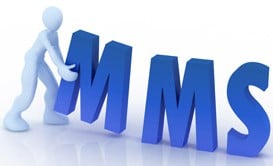 Creative Multimedia Messaging (Blades): International Patent Portfolio
Creative Multimedia Messaging (Blades): International Patent Portfolio
Multimedia messaging has really taken off! Rather than just send a flat text message, users can combine images, graphics, fonts and colors in a single, creative message. Way back in 2009, the inventor of this portfolio first envisaged the far-reaching potential for more creative messaging options. The challenge, however, was to find a way to display a message on a receiving device in exactly the same format as it had been created on the sending device.
The resulting invention adapts screen capture to messaging. By capturing the screen content of a message that has been creatively designed, a JPEG image or other portable graphic file is produced. This file can then be transmitted as a multimedia message to any recipient, and will appear on a recipient’s device exactly as it was sent by the sender, regardless of the recipient’s hardware or operating system.
Post publication of the invention, the transformation away from plain texting began with the launch of color messaging apps in 2011. Today, creative multimedia messaging is popular and in common use, and it continues to transform the way we communicate.
This video was presented to key industry players in 2014. By incorporating a capture means to native messaging, it shows how a message having any content whatsoever can identically reach across platforms without the need for the sending and receiving devices to share common graphical assets.
This portfolio includes U.S. Patent No. 8,666,374 for a “Method and system comprising means to transmit an image of a message” as well as Canadian Patent 2820079, Korean Patent 10-1724777 and Australian Patent 2011202042. All of the patents carry a 2009 Priority Date. This portfolio covers a fundamental technology for creative multimedia messaging. It would be a critical acquisition for any company working in this space, from smartphone manufacturers to cellular service providers to app publishers.
Dual-Mode Display/Keypad Smart Phone (Constin): U.S. Patent No. 9,292,048
Sometimes you need a small, compact cell phone that can be easily carried around with you in a pocket or pocketbook. That is not too large and not too heavy, ready to use to make or receive a phone call, and it has a touch screen display to enter the phone number you are calling or to select a number from your stored contacts. However, you sometimes need a larger, smarter phone, preferably with a keyboard and a screen, for when you need to send a lengthy text or you need to send or respond to an e-mail and you do not have access to a PC. Or you need to order on line or conduct important business, and a keyboard would sure be handy. Too bad you cannot have both.
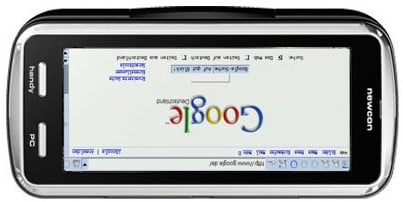
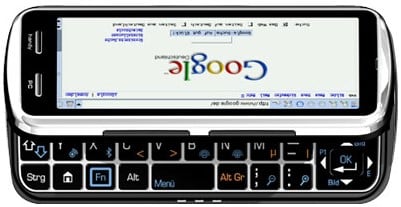
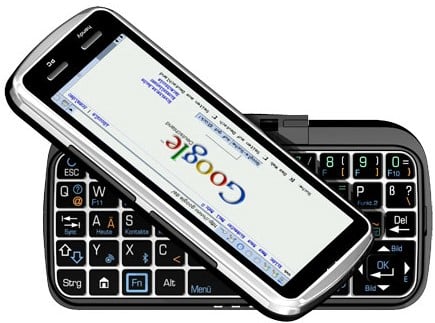
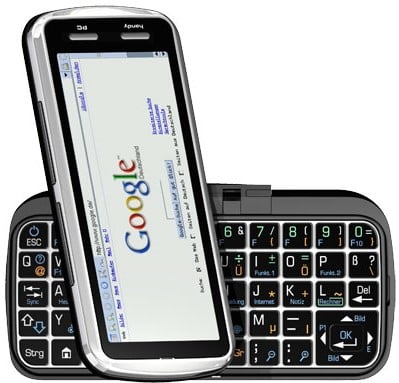

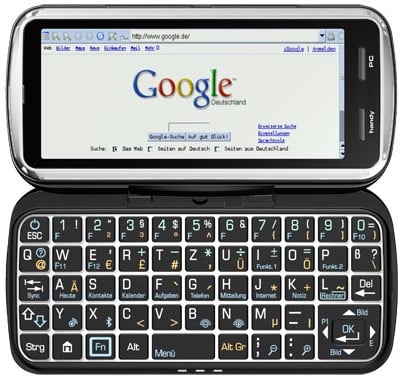
Correction! You can have both thanks to the invention covered by this patent. The invention covers what is clearly THE next generation of smartphones and PDAs. It enables a device to have BOTH a small and compact touchscreen display AND a conventional keyboard with a display! The touchscreen display is on the top of the smartphone or PDA, and it can be used just as current touchscreen displays are now used. However, the display lifts up and off the top of the device, and then swivels around, revealing a keyboard for which the touchscreen becomes a display to support the keyboard!
U.S. Patent No. 9,292,048 for a “Slide housing for an electronic communication device” creates the opportunity for a smart phone OEM to offer what is truly the next generation of smartphones, while all of its competitors are still selling outdated, single-configuration units!”
 Real-Time Video 9-1-1 System (Zap Systems): Three U.S. Patents and Three PCT Patent Applications
Real-Time Video 9-1-1 System (Zap Systems): Three U.S. Patents and Three PCT Patent Applications
The U.S. Department of Homeland Security puts out a public service message: “If you see something, say something.” Clearly, we all need to be on the lookout for suspicious behavior and report what we see to the authorities. This patent portfolio addresses exactly that situation, but offers a solution that replaces audio communications with real-time video.
The person who has downloaded an app based on this patented technology can send real-time video to the applicable dispatcher – showing the dispatcher an incident such as a medical emergency, fire, accident, robbery, act of terrorism or natural disaster – and the dispatcher sees the incident live as it happens! It also enables first responders to see the event live en route to the scene. The system includes dispatcher management of multiple video alerts from different users, and it can pull in municipal or other security cameras near the incident. The entire system is web based, so the dispatcher station can be a laptop, PC or other smart device.
| Patent No. | Description |
| 8,483,654 | System and Method for Reporting and Tracking Incidents with a Mobile Device |
| 8,878,938 | System and Method for Assigning Cameras and Codes to Geographic Locations and Generating Security Alerts Using Mobile Phones and Other Devices |
| 9,154,740 | System and method for real time video streaming from a mobile device or other sources through a server to a designated group and to enable responses from those recipients |
| PCT Patent Application 2013003068 | System and method for real time video streaming from a mobile device or other sources through a server to a designated group and to enable responses from those recipients |
| PCT Patent Application 2013003069 | System and method for reporting and tracking incidents with a mobile device |
| PCT Patent Application 2013003070 | System and method for assigning cameras and codes to geographic locations and generating security alerts using mobile phones and other devices |
This is a particularly robust portfolio as each patent includes between 27 and 30 Claims. It would be a critical acquisition for any cell phone/smart phone/PDA/tablet OEM or cellular service provider that wants to offer an app for its customers that can actually save lives. The three PCT Patent Applications can be used to secure additional patents for global exclusivity for the acquirer of this portfolio.
U.S. Patent No. 7,061,610 for a "Photonic Integrated Circuit Based Planar Wavelength Meter" covers a chip the size of a grain of salt that accurately measures the wavelength of a beam of light. In addition to its usefulness in fiber optic communications monitoring and quality control, it has other applications. It can be used to diagnose an illness by determining the exact color of a drop of blood, for example. It also has consumer applications. The chip can be inserted in a cell phone so your mom can use her cell phone to check the freshness of fruits and vegetables at the market. This patent would be a strategic acquisition for any business in the fiber optics, medical devices or cell phone industries.
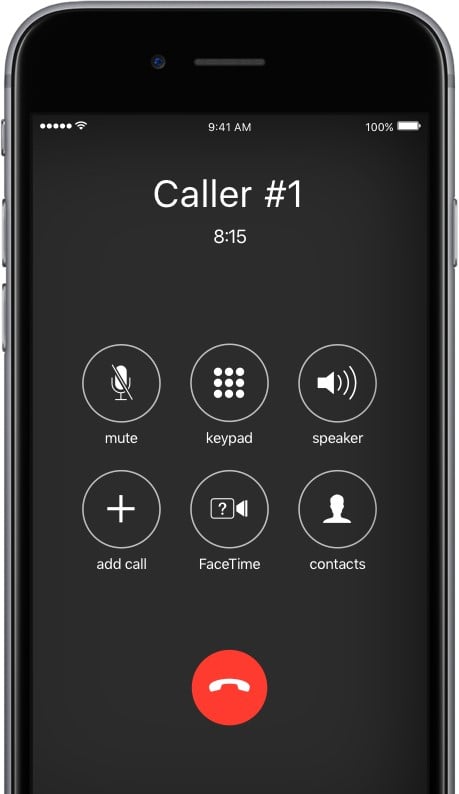 Cell Phone Multiple Call Sessions (ProjectOne): U.S. Patent No. 9,049,696
Cell Phone Multiple Call Sessions (ProjectOne): U.S. Patent No. 9,049,696
This patent details a multiple-call-session system for cellular phones with these unique advantages:
- It provides the capability of multiple lines on a cellular phone and integration of these lines with a network-based phone system.
- It leverages the strengths of the cellular network – for example, using a mobile phone remotely or while travelling – incorporated with advanced PBX features.
- One mobile phone may connect over a single cellular voice line to multiple phone devices through respective multiple lines.
- It enables independent control of multiple call sessions on a smartphone.
- It offers sharing of call sessions among several host mobile devices.
- It allows for modern social-style activity designed for voice.
U.S. Patent No. 9,049,696 for a “Multiple call session system and method for a mobile phone” would be a critical acquisition for a cellular phone or telephone equipment OEM or a cellular telephone service provider.
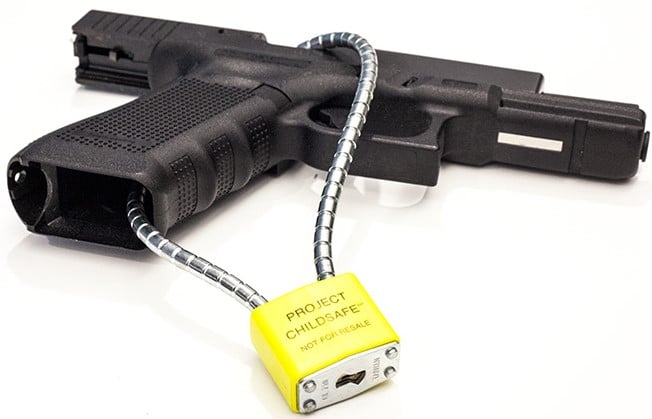 Gun Safety Using a Smart Phone (Milde): Nine U.S. Patents and Six U.S. Patent Applications
Gun Safety Using a Smart Phone (Milde): Nine U.S. Patents and Six U.S. Patent Applications
This portfolio addresses the serious problem of gun safety, and addresses it using smart phone technology. The patents in this portfolio cover:
- Using a smartphone as an “electronic key” to control use of a gun
- Biologic data (face image, iris image, voiceprint or fingerprint) captured by smartphone is transmitted to the gun lock. If it matches pre-stored data, the gun is unlocked. Gun owner’s voiceprint commands can also lock or unlock gun.
- Smartphone can be used as a key by an authorized user to control the gun, and additional smartphones can be used as keys by other authorized users.
- When the handgun is drawn, the device transmits video and audio to the smartphone which records and live streams it to a central station. The connection includes GPS coordinates, time stamps of shots fired and a request for backup.
- Gun is automatically locked in “safe areas” (school zone, airport, etc.).
- Police can override locks on unlocked gun.
- Includes features to resist tampering
| Patent No. | Description |
|---|---|
| 8,893,420 | Secure smartphone-operated gun trigger lock |
| 8,919,024 | Secure smartphone-operated gun trigger lock |
| 8,931,195 | Secure smartphone-operated gun lock with means for overriding release of the lock |
| 9,140,509 | Evidence collecting and recording apparatus for a gun |
| 9,217,616 | Evidence collecting and recording apparatus for a gun |
| 9,222,740 | Secure smartphone-operated locking device |
| 9,303,935 | Secure smartphone-operated gun lock with means for overriding release of the lock |
| 9,310,147 | Secure smartphone-operated gun trigger lock |
| 9,316,454 | Secure smartphone-operated gun lock with means for overriding release of the lock |
This portfolio would be a strategic asset for a cell phone manufacturer seeking to add value to its product line or cellular phone providers seeking to provide added-value to their subscribers, as well as for gun or gun accessory manufacturers that want to address the issue of gun safety in a manner that does not limit gun rights.
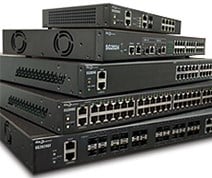 Improved Security Switch for Cell Phones, PDAs and PCs (Yoffe): International Patent Portfolio
Improved Security Switch for Cell Phones, PDAs and PCs (Yoffe): International Patent Portfolio
This portfolio discloses technology that provides multiple security advantages:
- A simple hardware solution that provides guaranteed protection of the user’s privacy
- A solution based on performing an operation that can only be done manually by the user
- Protection from audio/video information capture in mobile phones, unauthorized calls or SMS, user geo-location
- Protection from stealing
- Prevention of capture of the entered input e.g. secure PIN code entering
- Protection from unauthorized use of secondary communication and mobile payment
This portfolio includes U.S. Patent Nos. 8,090,961 and 8,522,309 for a “Security switch” plus European Patent Application 2106578, Japanese Patent Application 2010532588 and PCT Patent Application 2008090537. It would be a critical acquisition for mobile phone, PDA, PC and network equipment OEMs as well as mobile phone app developers, security agencies and business communications providers.
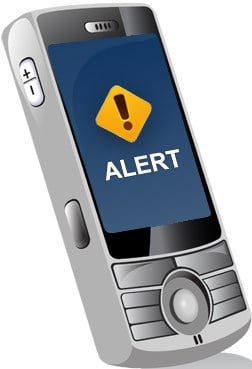 Emergency Messaging (Chii Ying): U.S. Patent No. 8,600,342 “Emergency Messages and Their Various Aspects” its Tawain Counterpart.
Emergency Messaging (Chii Ying): U.S. Patent No. 8,600,342 “Emergency Messages and Their Various Aspects” its Tawain Counterpart.
Superior to common emergency message sending methods/devices offered today, these patents cover methods which enables communication devices to not only deliver emergency message to a pre-set contact list, but also keep making calls according to a pre-set order until a pre-set number of successful calls is completed.
The ‘342 patent’s technology enables a service provider to increase the chance that the message or call is well noticed by the contact person and to provide a first class, patent-protected emergency messaging service that improves currently available market offerings such as subscription- based services (SaaS), SMS text-based notifications, and GPS-based services that require a separate device other than a standard mobile phone.
U.S. Patent No. 8,600,342 for “Emergency messages and their various aspects” has an accompanying Taiwan patent application. The emergency notification services market is growing fast. This patent offers the user the ability to notify key contacts in minutes, reduce communication errors and offer pre-set contacts for emergency responders. This portfolio would be a key acquisition for companies that are developing and selling emergency notification services, or companies seeking to expand into this fast-growing business sector.
Patent Brokerage Prospectus: Contact [email protected] to receive an analysis of each portfolio that includes:
- Executive Summary
- Patent Overview and History
- Technology and Investment Summary
- Market Research
- Company Analysis
- Illustrative Evidence of Use (if applicable)
We offer patents in these technologies:
- Agricultural
- Artificial Intelligence
- Automotive/Vehicular
- Aviation
- Banking/Financial Services
- Beverages/Foods/Nutritional Products
- Boat and Marine
- Cannabis and Medical Marijuana
- Construction/Building Trades
- Consumer Electronics
- Consumer Products
- Digital Currency/Cryptocurrency
- Drones/UAVs
- E-Cigarette & Vaping Technology
- E-Commerce
- Education & Training
- Energy/Power Generation
- Health and Beauty Products (HBP)
- Human Resources
- IoT Patents/Internet of Things
- Manufacturing
- Medical Electronics and Devices
- Mining/Drilling
- Mobile/Wireless
- Network/Location-Based Services
- Optics/Displays/Video/LED
- OTT Patents/Over-the-Top
- Packaging
- PCs and Notebooks
- Pharmaceuticals
- Robotics/Automation
- Semiconductor
- Shoe & Apparel
- Smart Home/Smart Office
- Social Media
- Software, Apps, and Architecture
- Sports/Sporting Goods
- Telecommunications/IP Telephony
- Warehousing/Material Handling
- Other
- Go to Patent Index
- Return to Patent MarketPlace

